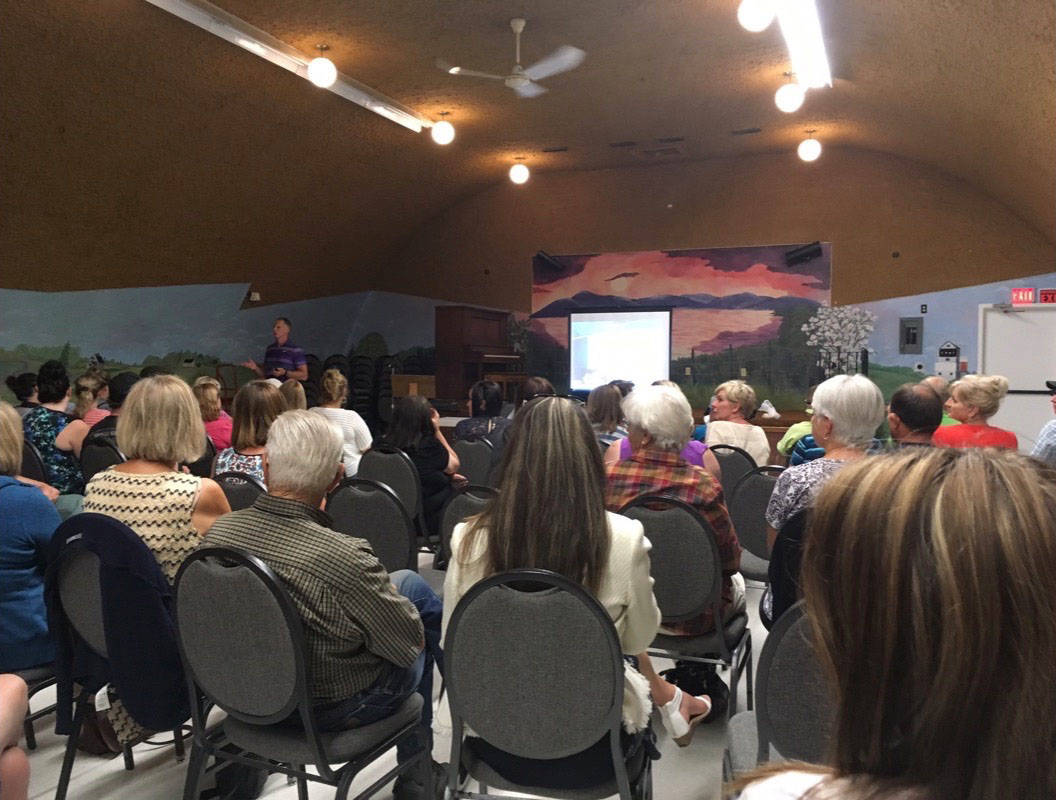A discussion on the fight against the deadly impact of fentanyl – from both medical and law enforcement perspectives – was held this week at the Poplar Ridge Community Hall.
Cpl. Brad McIntosh of the RCMP Clan Enforcement & Response Team (C.L.E.A.R) out of ‘K’ Division and Dr. Martin Davis, a professor of pharmacology at the University of Alberta, were the featured speakers.
McIntosh described not just the toll that fighting the spread of fentanyl takes from the law enforcement side of things, but he also touched on the role of harm reduction as well.
But first he talked about the startling nature of how fentanyl affects the body.
“About 75 micrograms will fix most pain for about 20 minutes,” said McIntosh of the drug’s powerful effect. “Double that up and you are down to about six breaths per minute.” Such a severe drop in respiratory function most often leads to death.
“After your blood goes without oxygen for a certain length of time, your heart starts to beat irregularly and then it fails eventually – that’s where the death is caused.”
An intake of 250 micrograms will stop someone from breathing altogether.
A treatment of naloxone will reverse even relatively deep stages of overdose, but as McIntosh pointed out, it takes just a couple of minutes for brain damage to occur.
“We’re having people who have recovered from their overdoses, but there are the ripple effects of (that kind) of damage as well,” he explained.
Tragically, many users are willing to tread very close to death in an effort to get as high as they can get, he said.
“I’d certainly have a world with naloxone rather than a world without it because it gives people that second chance,” he added. “People deserve a second chance.”
Unbelievably, he noted that he’s heard of dealers on B.C.’s lower mainland who will also sell naloxone kits along with the drugs.
“They want to keep their customers.”
As to harm reduction in general, McIntosh said the concept also branches out to other strategies, like helping people prior to their becoming trapped in such a dangerous addiction.
This includes bolstering community ties – as often, a failed relationship and other personal and social problems can lead people to experiment with drugs. McIntosh said ultimately, there also needs to be more education and more gatherings like the one at Poplar Ridge where folks can openly talk about the realities and dangers of fentanyl and other similar drugs that are plaguing many parts of society today.
“We can’t arrest our way out of this,” he said, referring to those who are hooked. Of course, it’s the providers of drugs like fentanyl that are the target for arrest.
“People with addictions – sometimes it’s medical, sometimes it’s emotional or about something lacking in their lives. Something is missing in their lives, so there is mental health support there too if a person wants it,” he said, referring to the overall harm reduction concept. “There is social support there also – with these harm reduction sites, it’s a ‘wrap-around’ health care.”
Sometimes, addicts will find the support they’ve been looking for via harm reduction programs. “They develop that relationship and a sense of trust, and at some point, the message kicks in,” he said. “Thirty per cent of people who attend the harm reduction site will more often go into medical treatment for addiction than people that don’t. That’s a pretty significant number of people, and it’s a great ripple effect for the costs of treating someone with an addiction, too, that overdoses on the street everyday and requires a paramedic to take them to the hospital in an ambulance,” he said.
“I don’t think it’s condoning drug use – it’s giving people a second chance,” he said, noting that if vulnerable people in general could receive help with mental health and relational issues, for example, early on they might not be swayed to get stuck in addiction.
He said there needs to be discussion amongst communities that have decided to come back together and not struggle in such an individualistic society.
“Often (with people with addictions) it was that second chance, or that third chance, or that 27th chance where something clicked and they realized there was a way out of where they were at,” he said, adding he’s certainly not soft on dealers.
“But if a person is an addict, and they are passed out on the street, what have I done to move that person along by arresting them at that point instead of getting them some help? You go after the ones who are selling the drugs.”
Davis provided a thorough look at the physiological side of fentanyl.
The family of drug that it’s from has a lengthy history, and what has happened over the decades is that, aside from its rapid and powerful pain killing abilities, it has also surfaced in more purified forms on the street which has added to its strikingly dangerous nature.
Davis said fentanyl also interferes with the communication between neurons in the brain, but of course it can have detrimental effects on body systems and organs in general.
“The brain that you have after you’ve taken drugs, is not the same one you had before you started,” he said, pointing out how addicted persons get stuck on the euphoria that getting high can bring.
“There is no naturally occurring stimulus that comes anywhere close to the kind of response you get with some of these drugs,” he said. “When you see this, you should realize that you should never, ever dabble in drugs. You are exposing your brain to a dopamine level that it’s not designed to handle.
“And it’s not that there is not will power. The brain just isn’t the same one they had before they started. So it’s very difficult once these changes have occurred – to change them back. Sometimes it doesn’t happen.”



